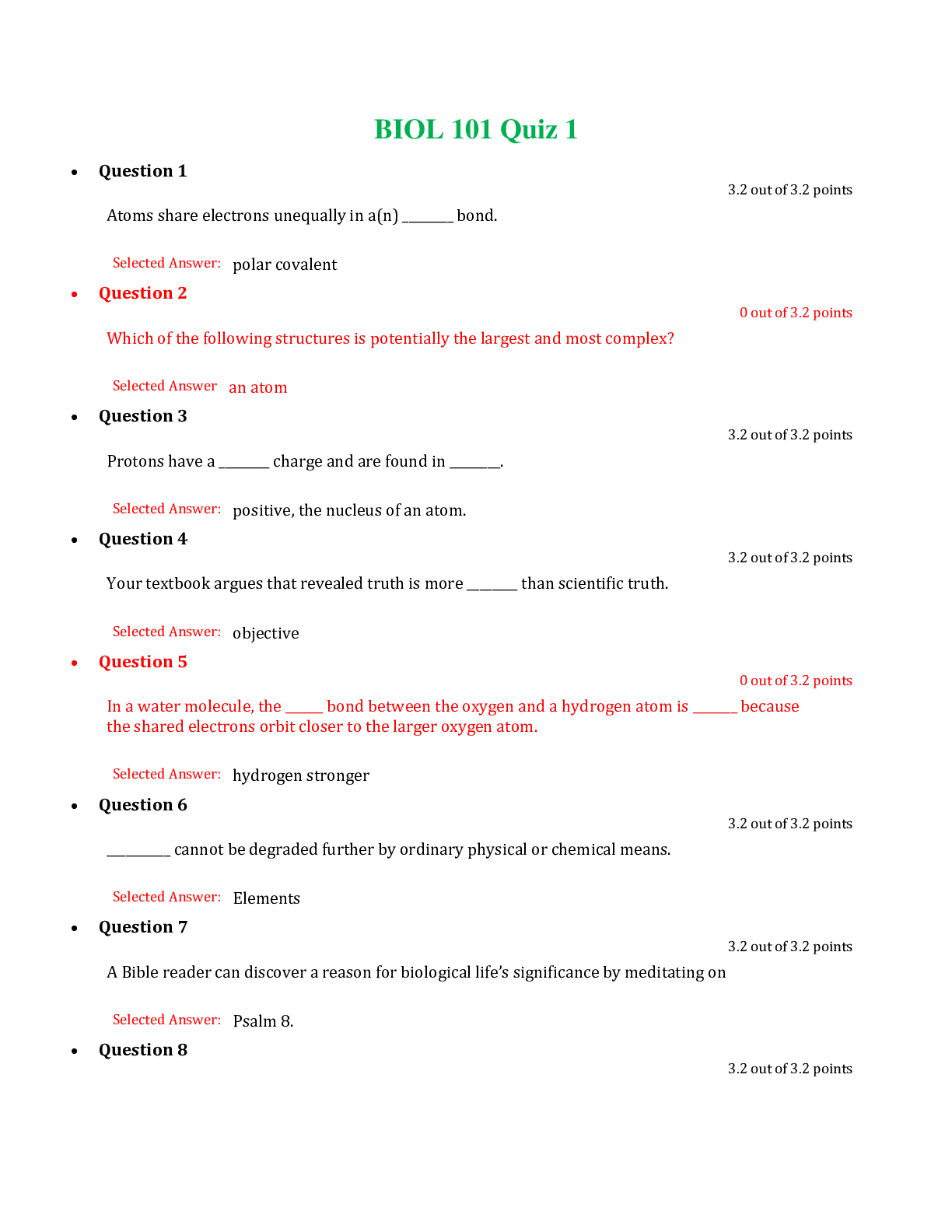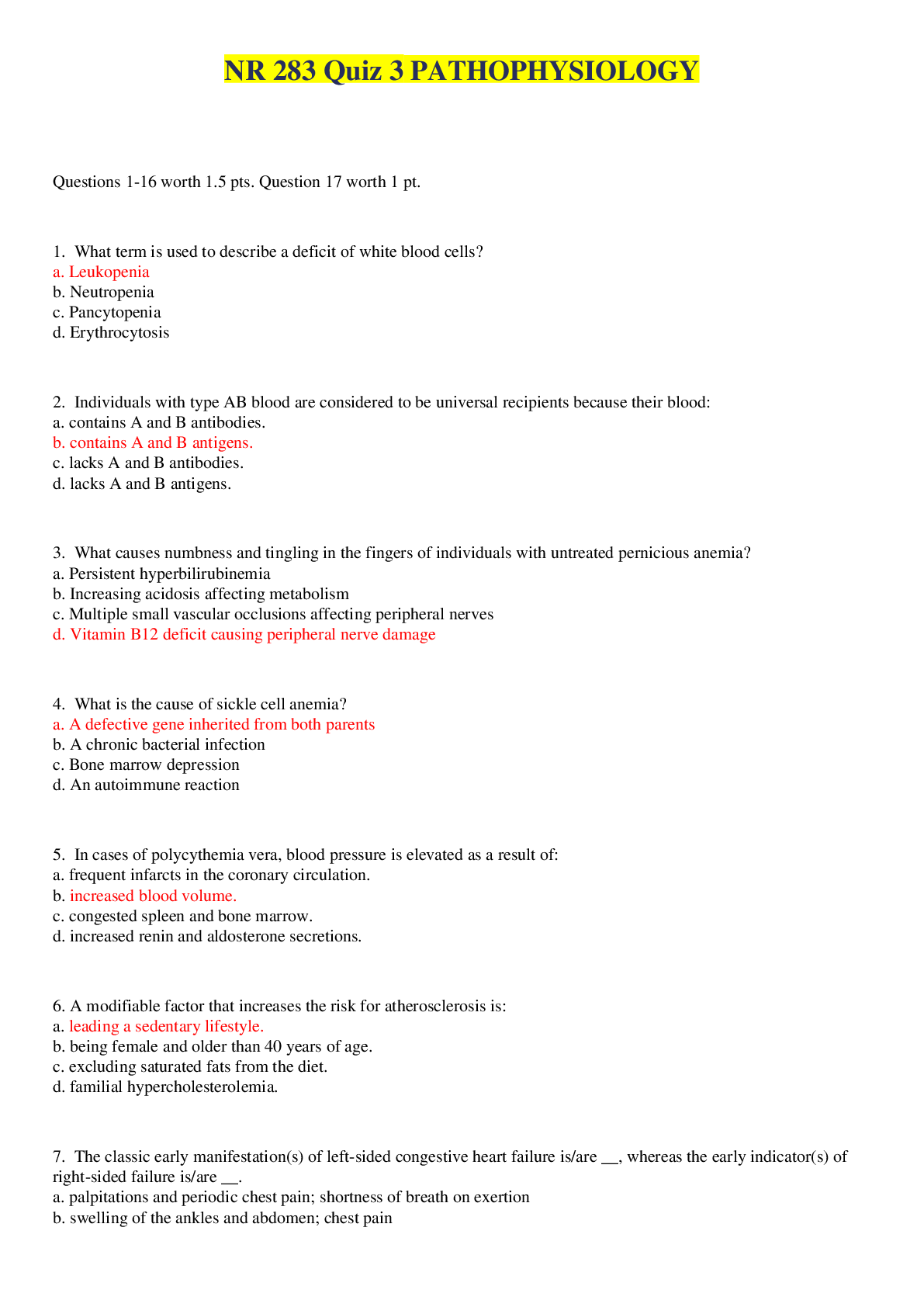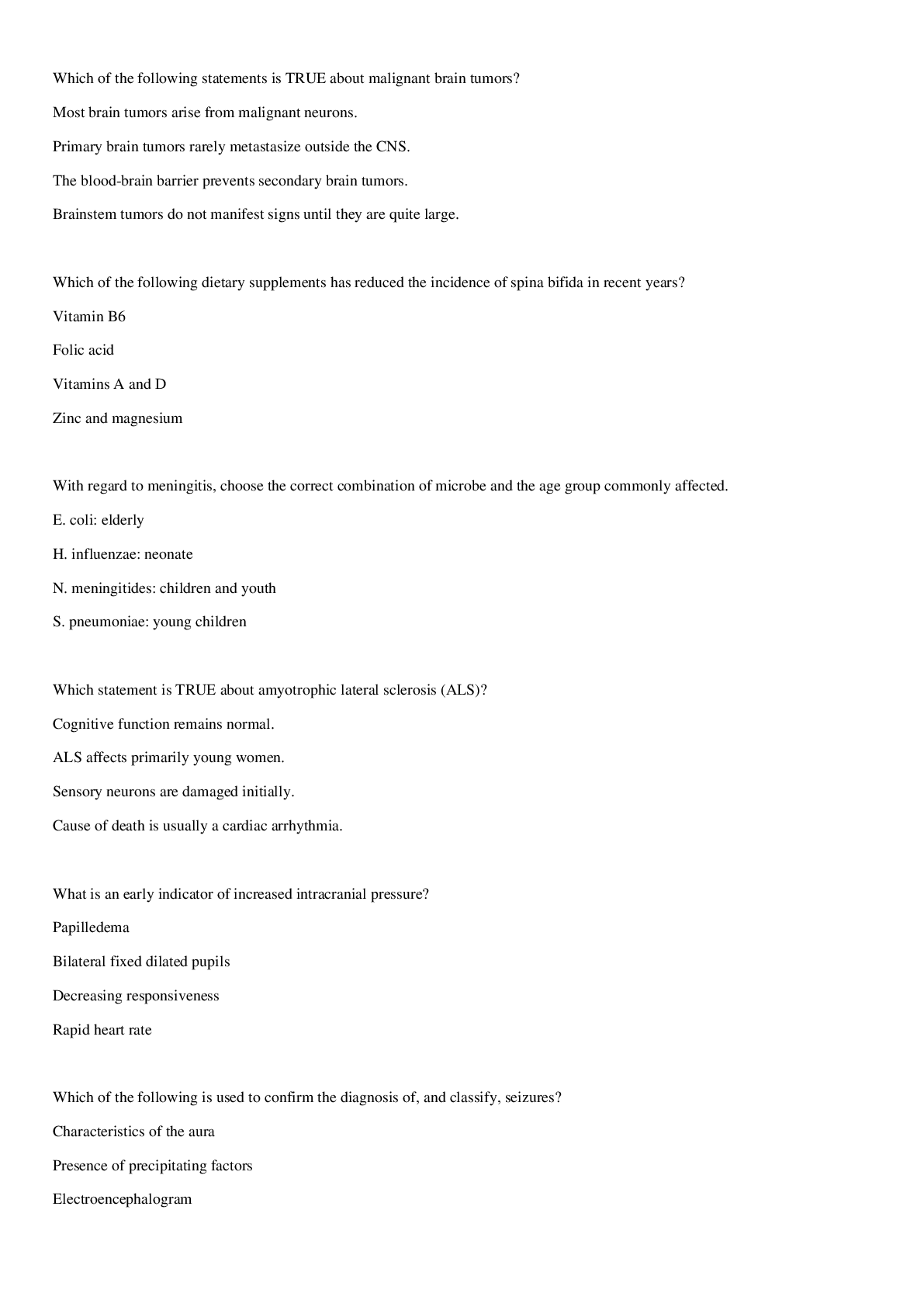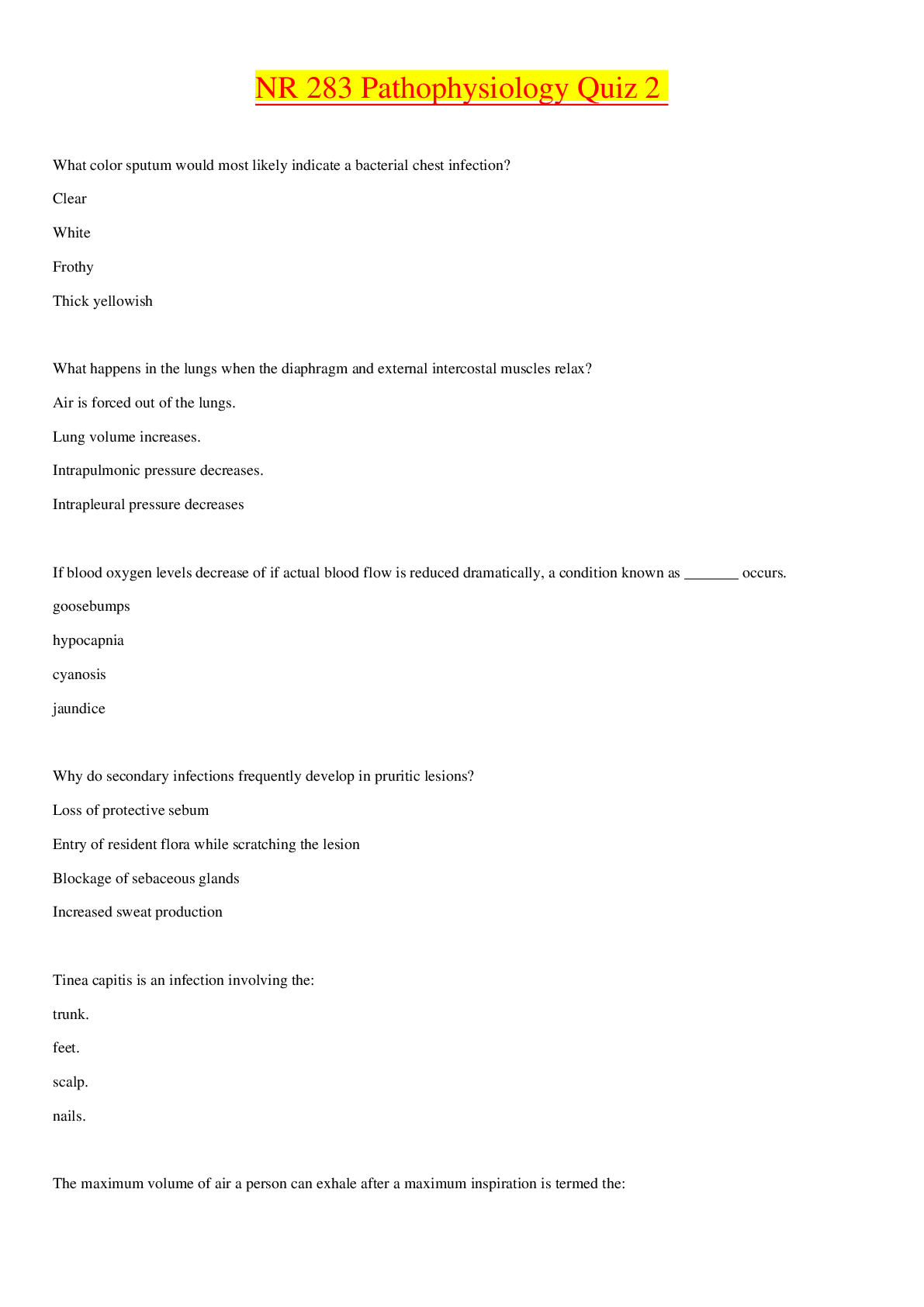Pathophysiology > EXAM > Chamberlain NR 283 Quiz 2 / Chamberlain NR283 Pathophysiology Quiz 2 (2019, Latest ) (Verified Answe (All)
Chamberlain NR 283 Quiz 2 / Chamberlain NR283 Pathophysiology Quiz 2 (2019, Latest ) (Verified Answers,Download to Score A)
Document Content and Description Below
NR 283 Pathophysiology Quiz 2 / NR283 Quiz 2 (Latest): Chamberlain College of Nursing Chamberlain NR 283 Quiz 2/ Chamberlain NR283 Pathophysiology Quiz 2 1. What color sputum would most likely indicat... e a bacterial chest infection? a. Clear b. White c. Frothy d. Thick yellowish - green 2. What happens in the lungs when the diaphragm and external intercostal muscles relax? a. Air is forced out of the lungs. b. Lung volume increases. c. Intrapulmonic pressure decreases. d. Intrapleural pressure decreases 3. Tuberculosis is characterized by the following: (select all that apply) a. It is spread by respiratory droplets b. Cavitation of the lungs can occur c. With new drugs, treatment of the disease results in rapid recovery d. Active skin lesions in later stages of the disease containing mycoplasma. e. It can cause the formation of non-infectious tubercles containing live bacteria 4. Why do secondary infections frequently develop in pruritic lesions? a. Loss of protective sebum b. Entry of resident flora while scratching the lesion c. Blockage of sebaceous glands d. Increased sweat production 5. Tinea capitis is an infection involving the: a. trunk. b. feet. c. scalp. d. nails. 6. The maximum volume of air a person can exhale after a maximum inspiration is termed the: a. expiratory reserve volume. b. inspiratory reserve volume. c. total lung capacity. d. vital capacity. 7. What would hypercapnia cause? a. Increased serum pH b. Decreased respirations c. Respiratory acidosis d. Decreased carbonic acid in the blood 8. Why are individuals susceptible to repeated infections with the influenza virus? a. Elderly patients are predisposed to secondary infections. b. The virus is transmitted by numerous routes. c. The virus is very difficult to destroy. d. Viral mutation reduces immunity from prior infections or vaccinations. 9. The skin lesion of psoriasis is a(n): a. non-scaling, violet-colored pruritic papule. b. nodule. c. pruritic vesicle. d. erythematous, butterfly-shaped rash. e. thick, scaly plaque. 10. In allergic individuals, the response to eating shellfish can be characterized: (select all that apply) a. as a Type I hypersensitivity reaction. b. bythe formation of keloids. c. by urticaria. d. as a disorder that potentially leads to anaphylaxis. 11. Many types of skin infections, for example cellulitis (erysipelas), furuncles (boils), and impetigo are usually caused by: a. a virulent strain of group A Streptococcus. b. Mycobacterium leprae. c. Staphylococcus aureus d. Pseudomonas aeruginosa 12. The usual manifestation of herpes simplex virus is: a. A painful nodule b. Pustule c. Cold sore or fever blister d. Fever 13. The cause of Kaposi sarcoma likely is: a. UV radiation b. Steroidal hormones c. Immunodeficiency d. Keratinization 14. Match the disease with the characteristics: (2 pts) a. Pemphigus __d_ caused by human papillomavirus b. Atopic dermatitis __c_ caused by a mite c. Scabies __a_ an autoimmune disorder causing blisters d. Verrucae __b_ commonly known as eczema 15. Malignant melanoma develops from melanocytes in a nevus (moles). Skin cancer is suspected in any nevus that shows changes defined as the ABCD of melanoma. Identify the changes? (4 pts) [Show More]
Last updated: 2 years ago
Preview 1 out of 3 pages

Buy this document to get the full access instantly
Instant Download Access after purchase
Buy NowInstant download
We Accept:

Reviews( 0 )
$7.00
Can't find what you want? Try our AI powered Search
Document information
Connected school, study & course
About the document
Uploaded On
May 12, 2020
Number of pages
3
Written in
Additional information
This document has been written for:
Uploaded
May 12, 2020
Downloads
0
Views
92

























